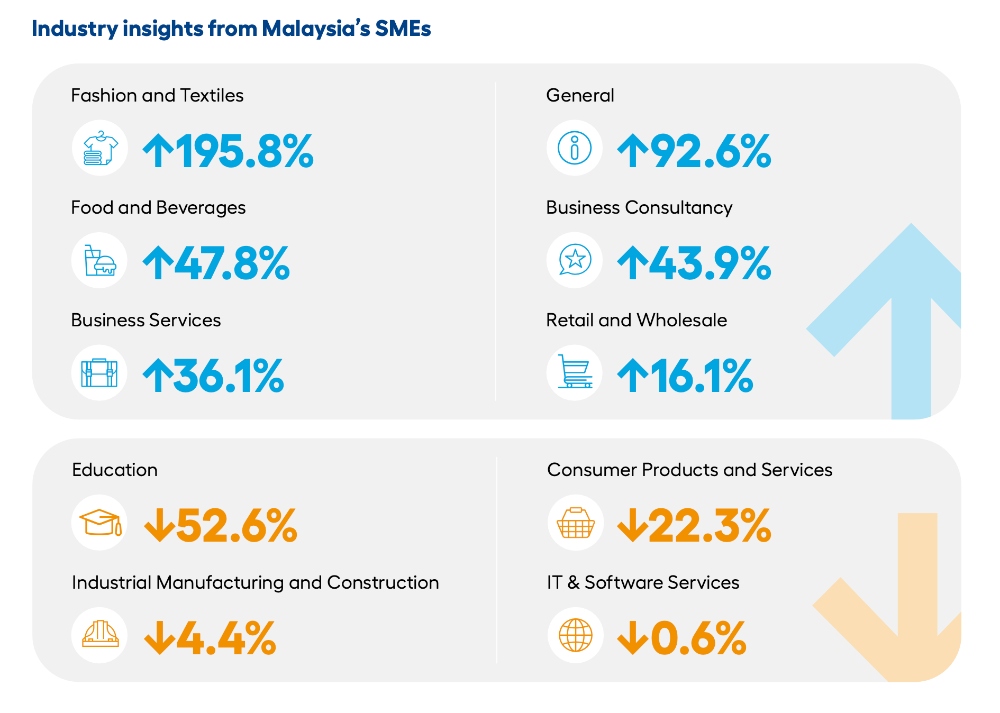SME spending signals growing confidence among APAC Businesses: Instarem SME Spend Barometer
By Digital News Asia November 28, 2024
- SMEs are turning to digital tools, AI, to address rising costs & improve efficiency
- Malaysia & Australia drive IT investments, with F&B, IT & software services seeing biggest gains

Instarem, part of Nium, Southeast Asia’s payments unicorn, launched its 2024 SME Spend Barometer, revealing insights into the spending behaviours of small and medium-sized enterprises (SMEs) in Singapore, Australia and Malaysia.
Based on data from a sample of 700 SMEs and several qualitative interviews with customers, Instarem’s inaugural SME Spend Barometer report analysed spending patterns from January 2023 to August 2024, highlighting how SMEs are strategically investing in technology, infrastructure, and talent to adapt to an evolving economic landscape.
A measured approach to expansion
Driven by Malaysia and Australia, export payments increased 6%, indicating a cautious yet optimistic approach to global expansion. In contrast, Singapore experienced a 27% year-on-year decline in export payments - a sign that local businesses may be shifting focus towards domestic priorities against rising costs and economic pressures.
Yogesh Sangle, global Head of Instarem, said: “Instarem has supported thousands of businesses in their growth journeys over the years. Expanding overseas allows SMEs to tap into broader customer bases and unlock market opportunities to achieve scale and growth. While a degree of caution is understandable in today’s climate, we anticipate that SMEs will continue to identify and seize opportunities that align with their goals."
Embracing AI and automation
Digital transformation and AI adoption are accelerating across APAC as reflected in a 29% increase in spending on information services compared to the same period in 2023. Malaysia and Australia are leading the charge in IT investments, with sectors like F&B (+120%), IT and software services (+66%), and business consultancy (+59%) registering the biggest gains.
Many SMEs interviewed for the report are turning to digital tools, AI, and automation to address rising costs and improve efficiency. They are adopting workflow automation, AI-driven fraud detection, and advanced data analytics, among other solutions to streamline operations, minimise manual work, and optimise resources.
However, not every industry is embracing tech at the same rate, with financial services and business services cutting their information services spending by 42% and 4%, respectively.

Return to work gathers pace
After years of hybrid or remote work, SME employers across all three markets are reinvesting in physical infrastructure as seen in the 16% growth in office expenses. Sectors like retail and wholesale, as well as business services, have seen office expenses rise by nearly 150% and 70%, respectively, suggesting a shift in how businesses are positioning themselves for long-term growth. This increased demand in commercial real estate also explains the more than doubling of transaction volumes in real estate and leasing (+107%) from 2023 to 2024.
Once again, these are not universal patterns, with some sectors such as industrial manufacturing and construction (-48%), online retail (-44%) and telecommunications (-28%) bucking the trend in favour of a more cautious approach driven by specific market needs.
“Employee demand for in-office collaboration has driven our decision to invest in physical office spaces in the Philippines and Vietnam. Balancing these investments with our offshoring model allows us to better manage costs while fostering greater collaboration and innovation,” said George Votava, group managing director at Net Fusion Technology.
Balancing talent and growth
Despite broader economic pressures, SMEs aren’t scaling back on talent investments, with salary payments up 7%. In Singapore, salary investments stayed flat, with some sectors, including media and marketing (+13%) and business services (+3%) even increasing their spending on third-parties (external advisors) to drive growth. This reflects a strategic shift towards bringing in more expertise without significantly expanding internal teams.
In Australia, salary payments among SMEs rose modestly (+3%), in line with the country’s Wage Price Index and the National Minimum Wage increase of 3.75%, suggesting that businesses are prioritising competitive pay and retaining critical talent while carefully managing costs.
What’s ahead
These findings show that SMEs are focusing on high-impact investments like digital transformation while adopting measured strategies in other areas. However, challenges such as fluctuating exchange rates and high processing fees continue to pressure resources.
“Managing costs is a top priority for SMEs, particularly in critical areas like talent and expansion,” said Sangle. “Thinking strategically about payments can not only help to reduce high cross border fees and improve cash flow – it can free up crucial resources for growth and set SMEs up for long-term success.”
For more insights, download Instarem’s 2024 SME Spend Barometer Report here.
Related Stories :


